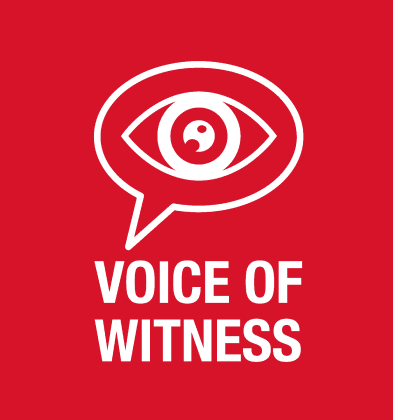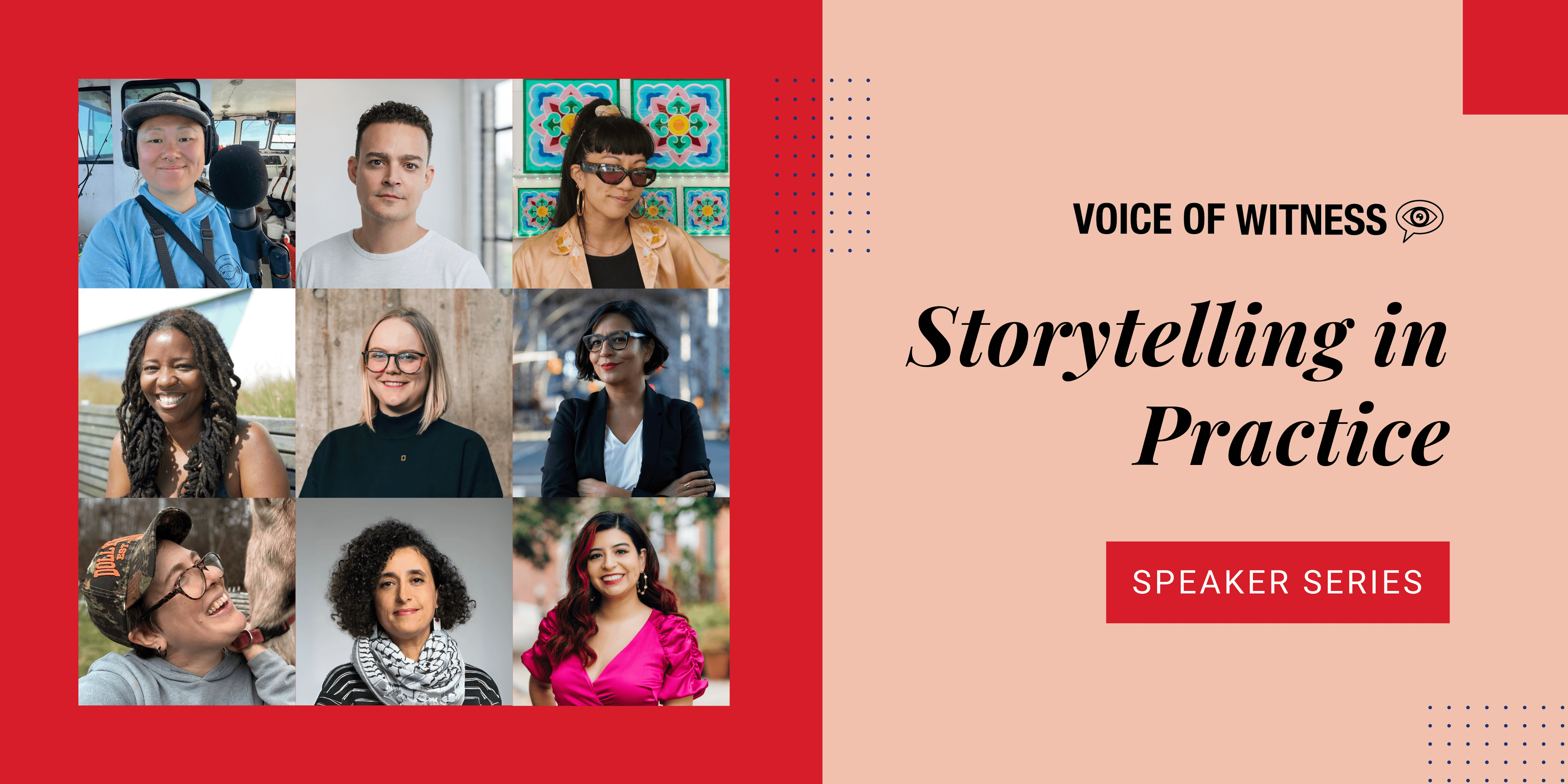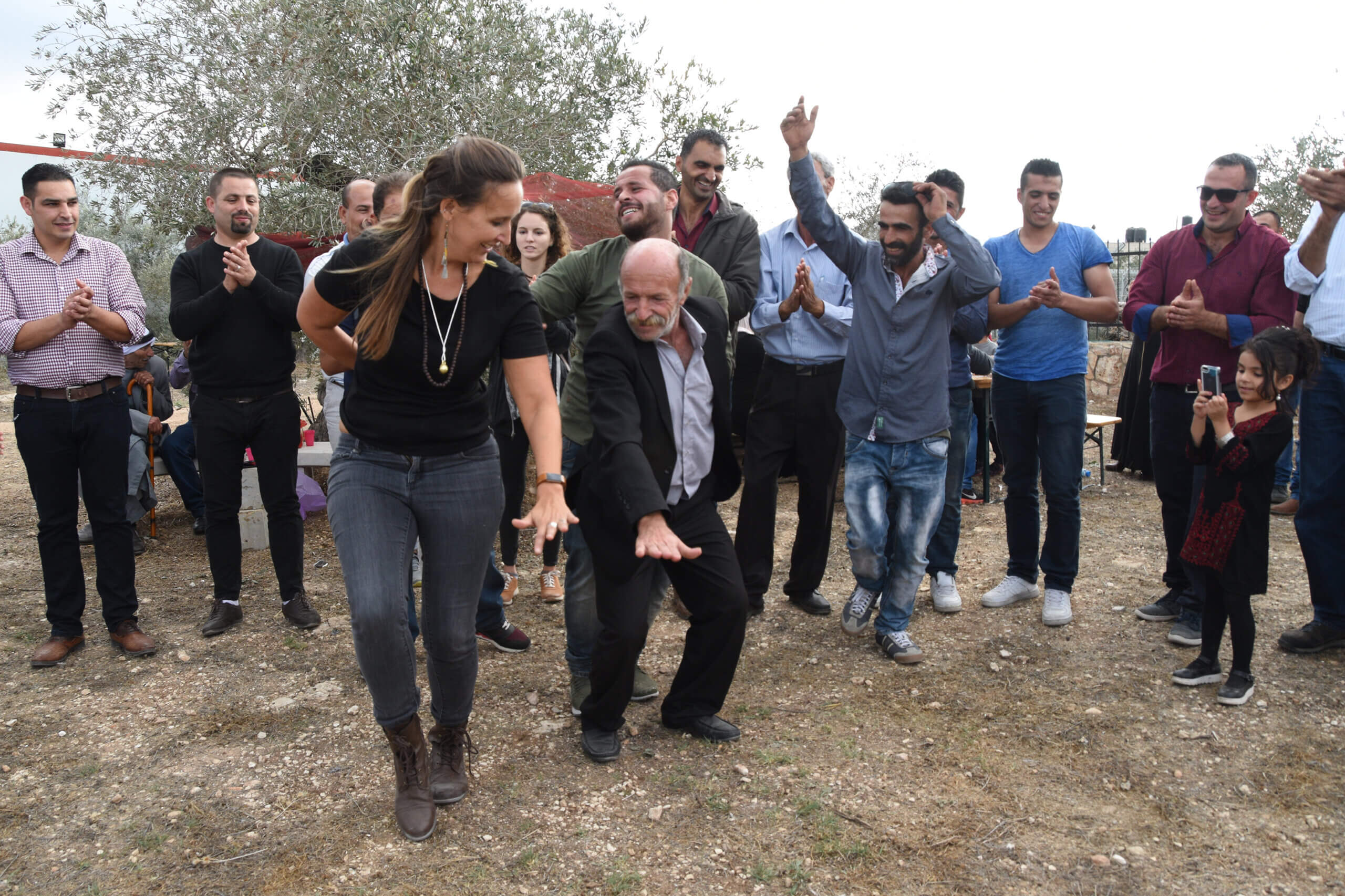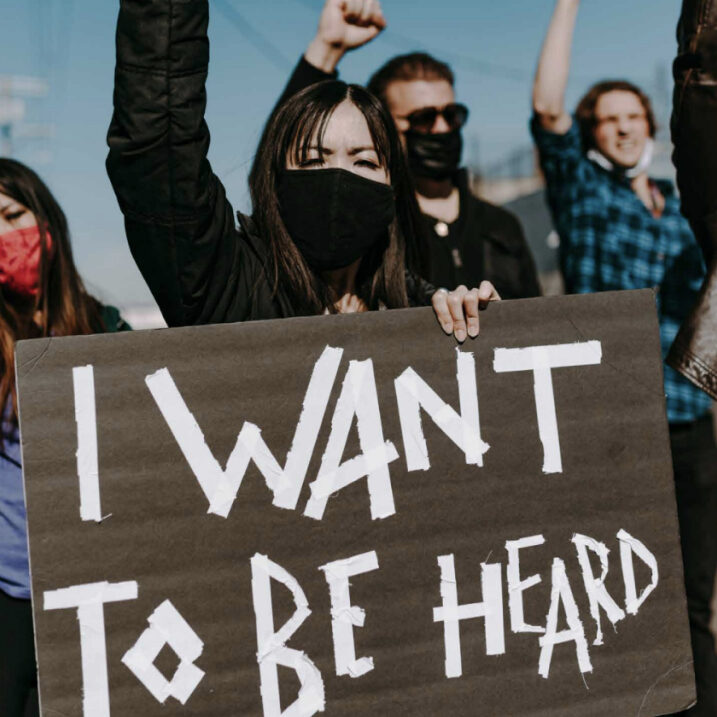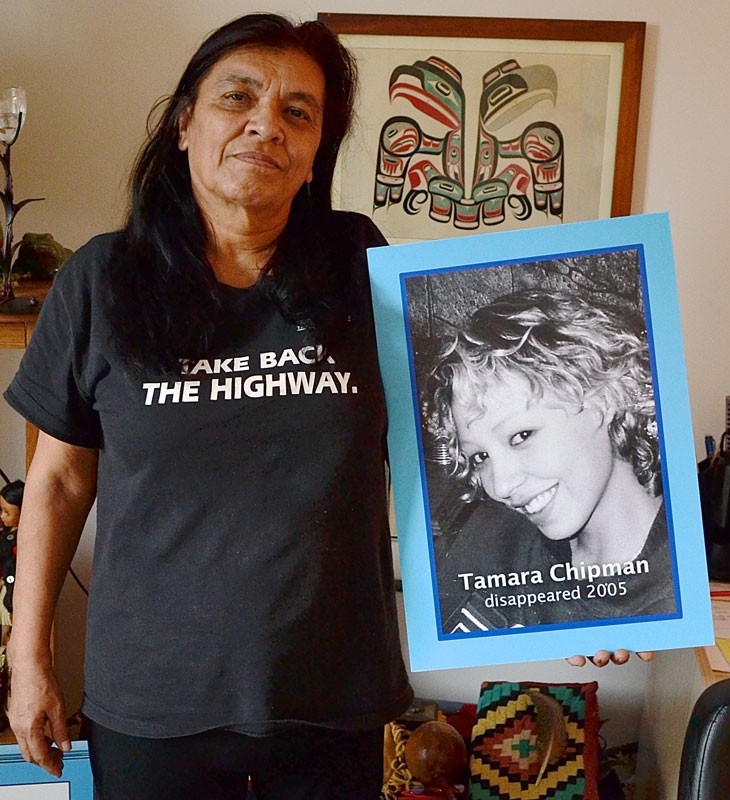
Gladys Radek (Gitxsan and Wet’suwet’en First Nations) is a tireless grassroots advocate fighting for justice for missing and murdered Indigenous women and girls (MMIWG) in Canada. Herself a survivor of sexual violence in the foster system, Gladys also lost her niece Tamara who went missing in 2005 at age 22 along the notorious Highway of Tears.
This inspired Gladys to become a community activist and eventually a Family Advocate for the National Inquiry into MMIWG in Canada. Gladys is one of Voice of Witness’s narrators in our new oral history book, How We Go Home: Voices From Indigenous North America.
Voice of Witness staff members Annaick Miller and Ela Banerjee had the opportunity to speak with Gladys about International Women’s Day, her experiences advocating for Indigenous women and girls, and the role of storytelling.
VOW: What does International Women’s Day mean to you? What has this cause day been like in the past?
GLADYS: I only heard about it a few short years ago when I lived out here in Ontario, and I was invited to a function for International Women’s Day. One thing I do notice is that here in Canada, there’s not really much of a big deal around International Women’s Day.
I think it shouldn’t be like that. I think it should be International Women’s Day every day. We are the true warriors of the earth. But I do know that it’s marked down on the calendar for March 8. And I think that it’s important that us women do come out into the public eye. There are so many people, so many women, that are actually working on the issues that all women face here in Canada. It’s the women that are rising to the call for action.
VOW: What do you feel is missing from the dialogue on International Women’s Day?
GLADYS: Real appreciation, I guess. We’re a male-dominated society here. I don’t think men really appreciate the hard work that women do in the country.
VOW: Do you feel like there is enough focus on Indigenous women when it comes to International Women’s Day?
GLADYS: Well, I will tell you that every [event] that I’ve gone to, I’ve been pretty much the only Indigenous face out there. Not too many of our women are invited to any of these types of functions.
VOW: Why do you think that is?
GLADYS: Racism. Racism is, particularly right now, at its finest in this country.
This battle that they’re having with Unist’ot’en, that’s my territory. Our Indigenous women are the ones that are on the ground, our Indigenous girls. And I just heard last night how one of our Indigenous young girls there was arrested. She looked like she was maybe 16. I don’t think the men really appreciate it, you know what I mean? She’s laying on the railroad. You know, it’s the women that are rising to the occasion, again.
[Note: For more information on the Unist’ot’en camp that has prevented fossil fuel pipeline construction through the Wet’suwet’en Nation’s unceded territory in British Columbia, read here.]
VOW: What do you see as some of the biggest issues impacting Indigenous women and girls?
GLADYS: With Unist’ot’en, that’s one big action that’s happening here in Canada. But I think that people just fail to recognize the work that women do.
Also, Coastal GasLink has recently moved into our territory up in Terrace-Kitimat area. One thing that I do talk about is the man camps, and the possibility of our women and girls being more exploited when the man camps are around. I just found out that there was a young 13 year old girl that was raped by two guys in an LNG (Liquified Natural Gas) truck, but that was never reported. I don’t know how many of these young women and girls are reporting that they’ve been sexually assaulted by men that are driving those LNG trucks between Terrace and Kitimat.
VOW: Right. Under-reporting is always a really serious issue.
GLADYS: Definitely being under-reported. It disturbs me. So, you know, we really do have to watch our girls. It scares me because I have a 13 year old granddaughter. And I’ve actually stood in lines at stores with my granddaughter and I’ll catch these guys, they’ll be sitting there and sizing her up. There were a couple of times where I actually said something, I would look at the guy and I just looked at him: “Stop that. She’s 13.” And their faces turn red and then they walk away.
VOW: What do you think people could do to make progress on this issue?
GLADYS: I think people need to speak out more. Just like with this racism. When there’s a woman that is out in public and then she’s being slapped around by her boyfriend, quite often people will look then they’ll turn their heads and rush away, they don’t want to be involved. We need to say something. Do something. Stop it from happening. Protect that woman. We’ve got to change the culture of the acceptance of the abuse. We weren’t put on this Mother Earth to be slaves or to be enslaved by the male. That isn’t why we were made.
VOW: What do you see as the role of storytelling in these efforts and in this movement to support women?
GLADYS: I think it’s very important. In order for people to understand what’s going on, they need to hear the story. With Indigenous people, we’ve got so many different shared stories, and when people learn about the rapes and the violence and everything that we’ve been subjected to for 500 years, people are appalled.
The more stories that are coming out, the better. Before I started this movement with [Walk 4 Justice], for example, people were not even talking about the missing and murdered Indigenous women. We started walking across the country from Vancouver to Ottawa and then the momentum built and built and built.
I think sharing the stories is not only important for society, it’s important for those women that are being abused. I think it’s good for them to hear a shared experience, to realize that they’re not alone. In the States, you have your Me Too movement. That’s a whole bunch of women sharing all their stories because we’ve been silenced for way too long about sexual abuse. We’ve been silenced way too long about the fact that we were sold as children. We’ve been silenced too long over all of it.
VOW: Do you think there is a role that schools and educators can play, as a new generation is growing up in North America?
GLADYS: That’s difficult. First, we have to get men to understand. We have to get them to listen. We need to open that dialogue. You can’t fix something if you don’t know what the root of the problem is.
We also need to understand that in most cases, especially when we talk about domestic violence, there is another ingredient that contributes to the violence against women and that is alcohol. And alcohol is socially accepted. But they also use that stigma and say that we Indians are nothing but drunks and savages. The majority of our people started drinking to mask the rape of our culture, our language, our being, our women, our men, and our children.
VOW: It’s not isolated, it is very much part of a larger context in history.
GLADYS: Yeah.
VOW: What has it been like so far to be a part of the How We Go Home project and to share your story for the book?
GLADYS: With projects like this, it gives us women a chance to understand the whole story. Because we all have different stories. Some are good, too! Not everything is bad.
I think it’s a good way to educate people. They need to realize that women are human beings. We’re all a part of the human race.
VOW: Do you have thoughts on how you might use How We Go Home in your own work?
GLADYS: I was just thinking about the title again – how do you go home? To share my situation with you, I was raised in Terrace. I was in foster care in Terrace and my home right now as we speak is not even two blocks from the house that I was abused in. That’s how we go home. That’s how I went home. It’s really difficult for me to live in that community because my perpetrators are still there in that community.
I did charge one of my perpetrators and he got two years house arrest, two years probation, and 150 community hours for sexually abusing his own daughter and myself. And we were the only two out of 160 potential victims that came forward in that charge.
The only reason that I moved back to Terrace was because I was getting older, so I had to move back to Terrace because that’s where my kids chose to live. It’s not the easiest thing for me. But I think that I chose that particular place that I’m living at because it builds my strength every day to continue to do what I’m doing. Saying, “this is not acceptable.” It’s really hard on me emotionally to be living there because I’d have to drive by there two, three times a day and it just haunts me.
VOW: As the book comes out, we want to try to emphasize to readers that for everyone who tells their story in the book, like yourself, these stories are ongoing. It doesn’t just end with wherever we left off at the end of the book, this is your life. This is other people’s lives that are continuing into the present. We want to think about how we can support this community in the present.
GLADYS: I know that the problem has never gone away. I know that sexual abuse in foster care is still very much alive out there. And at this time, our foster care system is under fire because there were so many of us. So when I realized I wasn’t alone, it made it easier for me. It made it easier for me to accept it. Will I ever forgive him? No. I can’t.
VOW: Is there anything that you wanted to share today, either relating to International Women’s Day or, unrelated?
GLADYS: For International Women’s Day, I just want to say to all the beautiful women that we have is that, I’m proud of all of you, no matter what you’re doing in your life. I’m just proud that you’re here as a woman. Know that whether you’re in trauma or not, you’re still a beautiful woman, and you are valuable.
To stay updated on How We Go Home: Voices From Indigenous North America, sign up for the Voice of Witness newsletter.
